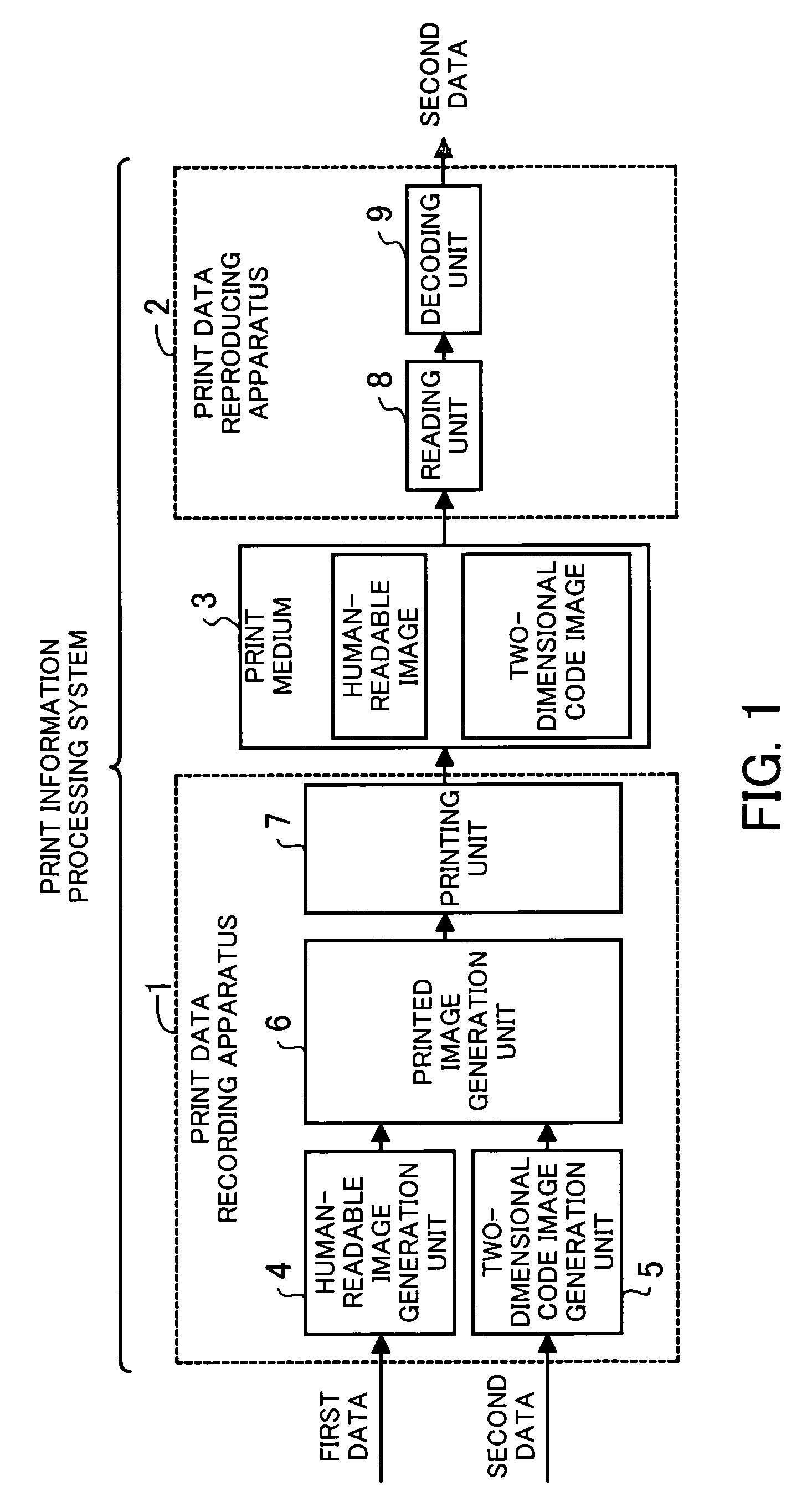Apparatus for recording two-dimensional code and human-readable data on print medium
- Summary
- Abstract
- Description
- Claims
- Application Information
AI Technical Summary
Benefits of technology
Problems solved by technology
Method used
Image
Examples
first embodiment
(5) First Embodiment
[0087]Operations and constructions of various embodiments of the present invention are explained below.
[0088]FIG. 5 is a diagram illustrating the operation of printing a human-readable image and a two-dimensional code image together on a print medium in the first embodiment. In the first embodiment, a two-dimensional code image 63 and a human-readable image 65 are superimposed on a sheet of paper 64, as illustrated in FIG. 5. For example, first, the two-dimensional code image 63 is printed on the sheet of paper 64, and then the human-readable image 65 is printed so that the human-readable image 65 is superimposed on the two-dimensional code image 63. Due to the superposition, an amount of information which can be printed in the same area is increased.
[0089]The two-dimensional code image 63 is generated by encoding any type of digital data 61, e.g., data representing characters, photographs, figures, sound, images, computer programs, or the like. The two-dimension...
second embodiment
(6) Second Embodiment
[0092]FIG. 7 is a diagram illustrating the operation of printing a human-readable image and a two-dimensional code image together on a print medium in the second embodiment. In the second embodiment, a two-dimensional code image 74 and a human-readable image 72 are printed on a sheet of paper 73, so that a portion of the human-readable image 72 is hidden by the two-dimensional code image 74, and information represented by the hidden portion of the human-readable image 72 is included in (i.e., represented by) the two-dimensional code image 74. Therefore, in the second embodiment, when a human-readable image 72 is requested to be printed on a print medium, and a portion of the human-readable image 72 is requested to be hidden on the print medium, the portion of the human-readable image 72 which is requested to be hidden, can be hidden by the two-dimensional code image 74 on the print medium, and thereafter can be restored by decoding the two-dimensional code image...
third embodiment
(7) Third Embodiment
[0095]FIG. 9 is a diagram illustrating the operation of printing a human-readable image and a two-dimensional code image together on a print medium in the third embodiment. In the third embodiment, input data 81 are divided into first and second portions 81a and 81b, the first portion 81a of the input data 81 is transformed into a human-readable image, and the second portion 81b of the input data 81 is transformed into a two-dimensional code image. Both of the two-dimensional code image and the human-readable image are supplied to a printing device so that both of the two-dimensional code image and the human-readable image are printed in different areas on a sheet of paper 82, as illustrated in FIG. 9. For example, newspaper articles are usually comprised of headlines and / or abstracts and texts (bodies of the newspaper articles). When only the headlines and / or abstracts are printed in the form of a human-readable image, and the texts are printed in the form of a ...
PUM
 Login to View More
Login to View More Abstract
Description
Claims
Application Information
 Login to View More
Login to View More - R&D
- Intellectual Property
- Life Sciences
- Materials
- Tech Scout
- Unparalleled Data Quality
- Higher Quality Content
- 60% Fewer Hallucinations
Browse by: Latest US Patents, China's latest patents, Technical Efficacy Thesaurus, Application Domain, Technology Topic, Popular Technical Reports.
© 2025 PatSnap. All rights reserved.Legal|Privacy policy|Modern Slavery Act Transparency Statement|Sitemap|About US| Contact US: help@patsnap.com



